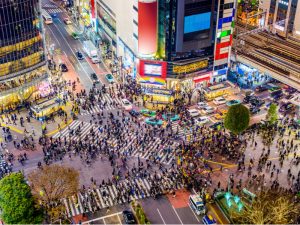
Japan is taking a leap ahead of the rest of the world, with the help of California company Autogrid, in developing what’s described as the largest behind-the-meter (BTM) virtual power plant.
The project will aggregate 10,000 distributed energy assets which, as one resource, will sell power into the nation’s wholesale energy market, still short on capacity from the loss of the Fukushima nuclear plant in 2011.
Tesla launched a larger, 50,000-home virtual power plant in Australia last year. But it is different in that it is a front-of-the meter project, said Christopher Sternberg, president and chief operating officer of Autogrid.
The Japanese virtual power plant will initially use only batteries, but at a future date can incorporate other various distributed energy assets, such as solar, electric vehicle chargers and smart home thermostats, said Sternberg in an interview with Microgrid Knowledge.
The project also has the capability to be configured into a microgrid, although that is not part of the current plan.
No cost to households
ENERES, a Japanese energy services and trading company, is acting as project developer and providing the batteries at no upfront cost to households. In exchange, the households will allow ENERES to use the batteries for capacity transactions in the market.
In the event of a power outage, the batteries will discharge to the homes, providing backup power.
Autogrid’s software will manage all aspects of the virtual power plant, including aggregation, dispatch and customer engagement.
“To take advantage of when to charge and when to discharge — and bid into the wholesale market — you need a software platform to connect all of the batteries together,” Sternberg said.
The software platform monitors battery telemetry — the current state of charge and the battery’s capacity to offer power to the grid or take from the grid. An algorithm creates predictive controls and shows how much capacity is available in real time.
About 200 batteries are scheduled for installation later this year and the remainder next year. ENERES plans to source batteries from several different manufacturers, among them Tesla, LG, Sonnen and Panasonic.
“What makes our platform unique is that we’re not tied to any particular device,” Sternberg said.
Lessons for the US
Japan has been deregulating its power market since 2016, a change that has attracted innovation and competitive players. The nation has also set aggressive renewable energy goals and is being pushed to move even faster.
Earlier this week 19 major corporations operating in Japan, including Apple and Sony, urged the government to set a goal to make the grid 50 percent renewable by 2030.
No similar, massive virtual power plants are yet underway in the US. But Sternberg sees lessons learned from the ENERES project for the US market, particularly in places like California, New York and PJM, where use of batteries, and in some cases virtual aggregations, is ramping up.
This type of technology is coming to the US sooner rather than later,” he said.
Schneider Electric, a large microgrid player, recently took a percent stake in Autogrid. Sternberg sees the partnership as indicative of growth in projects that create virtual power plants and microgrids.
Large players see opportunity in microgrids (“essentially miniature virtual power plants”), he said, as well as projects that connect multiple microgrids into a virtual power plant.
“This model is just really starting to take off around the world. We think the main reason for that is the improvement and availability of storage technology over the last 12-19 months — it has gone mainstream,” he said. “It’s an exciting time to be in the industry.”
Source: Microgrid Knowledge. Reproduced with permission.
